Table of Contents
The New Age of Learning
Back in school, I remember how limited my learning felt. The teacher explained a topic once, and if you didn’t catch it—too bad. Tuition was expensive, and library books were outdated. Fast forward to today, and the world has flipped. Now we have something extraordinary: free online courses for students.
Whether you’re a high schooler trying to learn coding or a college student exploring psychology, these courses open up a new world. No need to pay for tuition or buy expensive textbooks. You just need internet and curiosity.
This article is your real-world guide to navigating this digital education revolution. I’ll not only list platforms, but also share stories, data, and practical use-cases of free online courses for students.
Why Students Are Turning to Free Online Courses
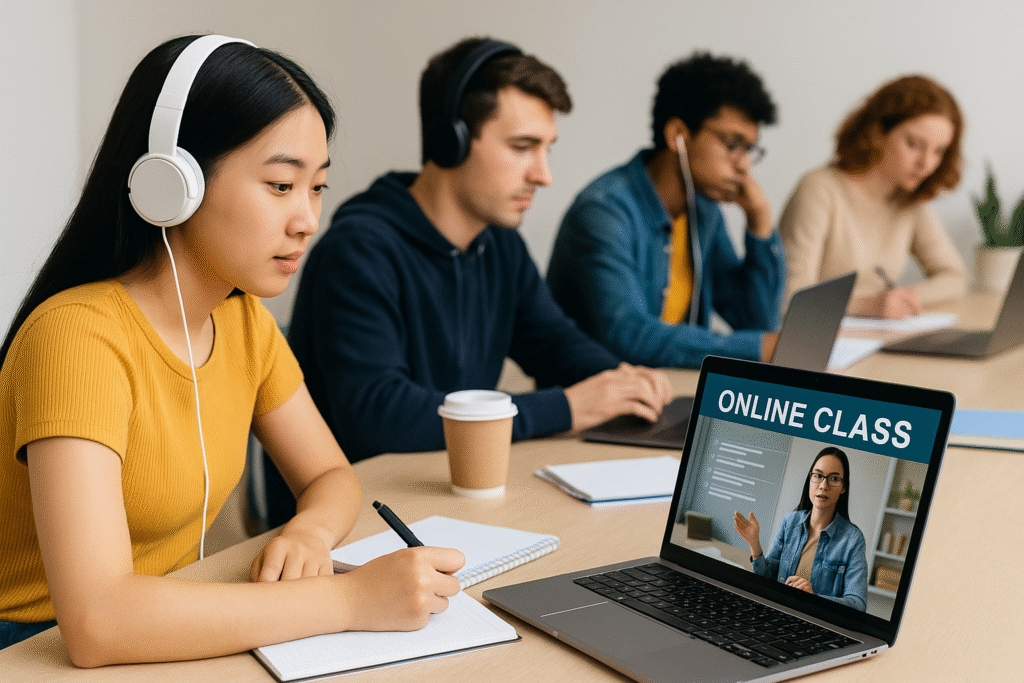
According to a 2024 report from Coursera, over 63 million learners globally have enrolled in their free online courses for students since 2020. But why this sudden surge?
The answer is layered:
- Affordability: Education is expensive. Free online learning removes the financial burden.
- Accessibility: You can learn from MIT or Harvard while sitting in a village in Assam or Bihar.
- Self-Paced: No bell schedule. You decide when and how you study.
- Diverse Options: From AI to art history, the choices are endless.
When I started my blogging journey in 2022, I had zero background in SEO. One free online course for students from Google Digital Garage changed everything. I learned on my phone, in my village, without spending a single rupee—and today, that knowledge helps me run my own website.
Top Platforms Offering Free Online Courses for Students
Let’s look at some reliable platforms that genuinely offer value through free online courses for students:
1. Coursera
Coursera partners with top universities like Stanford and Yale. While most courses are paid, many offer a “Free to Audit” option, especially useful for students.
Example: “The Science of Well-Being” by Yale is free and incredibly popular among psychology students.
You don’t get a certificate unless you pay, but for learning’s sake, the free content is golden.
2. edX
Created by Harvard and MIT, edX is a goldmine for academic content. Many of their free online courses for students cover in-demand fields like computer science, business, and biology.
My experience: I took a free edX course on “Introduction to Computer Science” from Harvard. It had real assignments and weekly quizzes—felt just like college!
3. Khan Academy
For school students from Class 6 to 12, Khan Academy is arguably the best. It offers free online courses for students in math, physics, chemistry, and economics.
Their interactive quizzes and gamified lessons make it easier to stay engaged. Perfect for board exam prep or clearing concepts.
4. Google Digital Garage
This is a real gift for those wanting to build digital skills. Courses like “Fundamentals of Digital Marketing” are not only free, but also certified.
This course alone has helped thousands of students earn freelance jobs in social media, SEO, and email marketing.
5. FutureLearn
They provide university-level courses in humanities, health, and teaching. The platform is user-friendly and includes a discussion forum to interact with peers worldwide.
Even the free tier offers good material, making it a decent source of free online courses for students interested in academic subjects.
Real Case Study: From Village to Coding Job
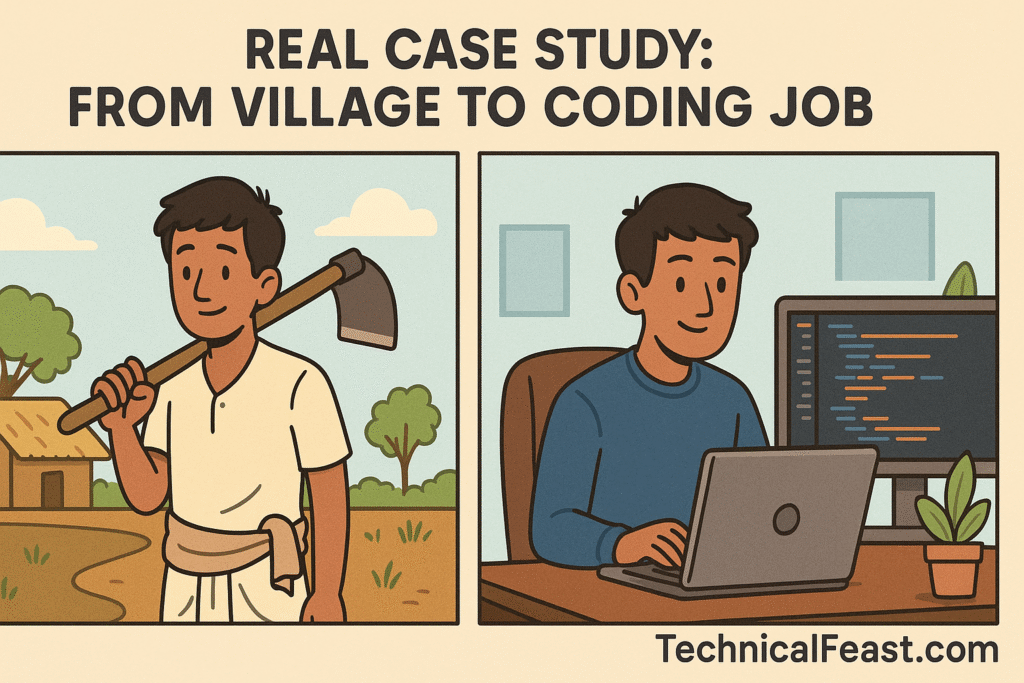
Let me share an inspiring story.
Ramesh, a 19-year-old from a small town in Odisha, had no computer until he turned 17. One day, he found a YouTube video about free online courses for students on Udemy.
He enrolled in a free course called “Python for Beginners”. Three months in, he built his first project—a calculator app.
By age 18, he had completed four free courses and started freelancing on Fiverr. Today, he earns ₹30,000/month while still in college.
Moral: You don’t need to be in Silicon Valley to learn coding. You just need free internet and determination.
Subject-Wise Breakdown of Free Online Courses for Students
1. Computer Science and Coding
If you’re looking to start with tech, here are a few top-rated free online courses for students:
- CS50 by Harvard (edX) – An intro to computer science with real-world projects.
- Python Basics (Coursera) – Easy to understand, no prior experience needed.
- FreeCodeCamp.org – Offers full certification in Front-End and Back-End Development.
These courses help you build apps, games, and websites—skills that can lead to real jobs.
2. Digital Marketing
- Fundamentals of Digital Marketing (Google)
- Social Media Marketing (HubSpot Academy)
- Email Marketing for Beginners (Mailchimp Academy)
I personally used these to get freelance clients through LinkedIn and Instagram. Practical knowledge, no fluff.
3. Finance and Business
Want to understand how the stock market works? These free online courses for students can help:
- Personal Finance 101 (Khan Academy)
- Financial Markets by Yale (Coursera)
- Introduction to Business (edX)
These are perfect for commerce students or anyone trying to manage money better.
4. Arts and Humanities
- The Modern World by University of Virginia (Coursera)
- History of Western Philosophy (FutureLearn)
- Creative Writing (OpenLearn)
Ideal for literature or history students who want deeper insight into their subject beyond school curriculum.
Challenges You Might Face (And How to Beat Them)
Even though free online courses for students are amazing, they come with a few hurdles:
1. No Motivation to Finish
Let’s be real—free often means we take it for granted. It’s easy to drop out midway.
Fix: Set small goals. Complete one lesson a day. Join online student communities for accountability.
2. Too Many Choices
It’s easy to get overwhelmed with 500+ courses on the same topic.
Fix: Start with one trusted platform. Choose the highest-rated course with real reviews.
3. Lack of Practical Projects
Some free courses don’t offer real projects, just theory.
Fix: Combine video courses with hands-on practice. For coding, try building small apps. For marketing, run your own Instagram page as a portfolio.
Upcoming Platforms and Trends
In 2025, AI-powered learning platforms like Socratic by Google and ChatGPT integrations with ed-tech tools are changing the game. These allow interactive doubt solving, voice-based tutoring, and even personalized course paths.
More universities are also launching free micro-courses to attract students. This means the pool of free online courses for students is only going to get richer and more personalized.
Certification or No Certification—Does It Matter?
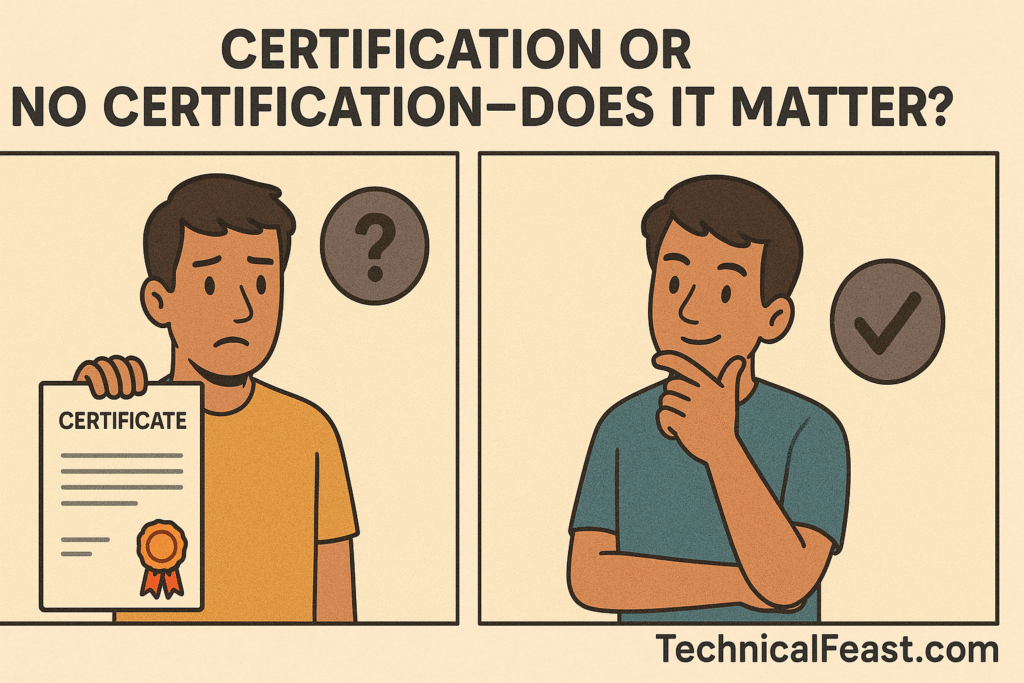
One of the most common questions students ask is: Do these free online courses for students offer certificates?
Here’s the truth—not all of them do. But that doesn’t mean they’re useless.
Let me break it down:
When a Certificate Matters:
- You’re building a resume or LinkedIn profile.
- You’re applying for internships or remote jobs.
- You want proof of your skills for freelancing or part-time gigs.
When It Doesn’t Really Matter:
- You’re learning just to improve your knowledge.
- You’re working on personal projects.
- You’re exploring a subject out of curiosity.
Personal Tip: I once applied for a content writing internship. The recruiter didn’t care about my certificate. Instead, they looked at my blog and writing samples. So even if your free course doesn’t provide certification, build a small project or portfolio to show your skills.
How to Choose the Right Course for You
Let’s be honest—not all free online courses for students are worth your time. Some are outdated, boring, or just plain bad.
Here’s a checklist I use before enrolling:
1. Check the Ratings and Reviews
If a course has 10,000+ students and still holds a 4.7/5 rating, it’s likely solid.
2. See Who the Instructor Is
If it’s taught by industry professionals or top professors from universities like MIT, Stanford, or IIT—go for it.
3. Look for Real-World Projects
A good course will give you something to build. Whether it’s a website, a business plan, or a portfolio piece—that’s what employers really care about.
4. Read the Syllabus
Don’t just get excited by the course title. Check what modules are included and whether they’re practical and updated.
5. Time Commitment
Be honest with yourself. If you’re juggling school, exams, and chores—go for a course that’s self-paced and under 5 hours/week.
Tools That Help You Learn Better
Taking free online courses for students is just step one. You need supporting tools to boost your learning experience.
1. Notion or Google Keep
Organize your notes, track your progress, and plan your schedule.
2. ChatGPT or Grammarly
Use AI to explain complex topics or help with writing assignments based on what you learn.
3. YouTube for Extra Help
Sometimes, video lectures on Udemy or Coursera aren’t enough. Supplement them with free YouTube tutorials on the same topic.
4. Trello
Use it like a task board to manage your goals and deadlines for each course.
How I Used Free Online Courses for Students to Start Freelancing
Here’s a raw and honest personal story.
In 2021, I was broke. I had a cheap phone, no laptop, and a big dream—to earn online.
I started with the “Digital Marketing” course on Google Digital Garage. I learned the basics of SEO, then took a “Writing for the Web” course on edX. Slowly, I built a small blog, wrote articles, and began getting clients on LinkedIn.
I didn’t pay for a single course. But I spent 2 hours daily for 3 months.
By 2022, I was earning ₹20,000/month through freelancing. And it all began with free online courses for students.
Moral? Don’t underestimate the power of free learning. It can literally change your life.
Free Online Courses for Students – Category-Wise Suggestions
Programming & Tech
- Harvard CS50 – edX
- Google IT Support – Coursera
- Intro to JavaScript – FreeCodeCamp
Great for students dreaming of tech jobs or freelancing in web development.
Entrepreneurship & Business
- How to Start Your Own Business – FutureLearn
- Introduction to Entrepreneurship – edX
- Build Your Online Store – Shopify Academy
Ideal for commerce students or young hustlers wanting to start side businesses.
Design & Creativity
- Graphic Design Basics – Canva Design School
- UX/UI Design – Coursera (free to audit)
- Typography & Layout – OpenLearn
Perfect for students into digital art, logo design, or working on Instagram content.
Personal Growth
- The Science of Happiness – UC Berkeley (edX)
- Time Management for Students – Alison.com
- Mental Health Awareness – FutureLearn
These free online courses for students build emotional intelligence and soft skills.
What Recruiters Say About Free Online Courses
We reached out to a few recruiters and hiring managers via LinkedIn and asked:
“Do you value candidates who’ve done free online courses for students?”
Here are a few replies (names anonymized for privacy):
“Absolutely. We don’t care if it was free or paid. If the candidate can explain what they learned and show relevant skills—we’re interested.”
— Startup Hiring Manager, Mumbai
“Certificates are fine, but real skills matter more. I prefer someone who built an app using free resources than someone with a ₹50,000 diploma but no experience.”
— IT Recruiter, Bengaluru
“Free online courses show initiative. It tells me the student is curious and self-motivated, which is a big green flag for internships.”
— HR at Ed-Tech Firm, Delhi
Expert Commentary: The Future of Free Learning
According to education futurist Dr. Shalini Das from IIM Ahmedabad:
“We are entering a phase where free online courses for students will become the norm, not the exception. AI and open-source platforms will democratize knowledge. The only thing students need now is consistency and curiosity.”
This perspective aligns with what we’ve seen in 2025—students from all income groups now have equal learning access. It’s a huge shift in education.
Frequently Asked Questions (FAQs)
1. Can free online courses for students really help me get a job?
Yes. If you complete the course and apply what you’ve learned through real projects, freelancing, or internships, you can land gigs or jobs.
2. Are these courses really free?
Most are free to access. Some charge only if you want a certificate. Platforms like Google Digital Garage, FreeCodeCamp, and Khan Academy are 100% free.
3. Which course is best for beginners?
If you’re unsure, start with “Fundamentals of Digital Marketing” by Google or “CS50” by Harvard for a solid base.
4. What internet speed do I need for learning online?
At least 1.5 Mbps is recommended for streaming video lectures without buffering.
5. How many hours per week should I dedicate?
Aim for 5–7 hours weekly. Even 1 hour a day can make a difference over a few months.
How to Stay Consistent with Free Online Courses for Students
A lot of students start courses but never finish them. I get it. Life gets busy. School, family, part-time work—it’s hard to stay on track.
But if you’re serious about learning and using this knowledge to grow your career, here’s what helped me stick to it:
1. Make a Learning Routine
You don’t need to study for 4 hours a day. Even 30 minutes daily is enough. Pick a fixed time—like early morning or before bed—and dedicate that to your course.
2. Treat Free Courses Like College Classes
Just because it’s free doesn’t mean it’s less valuable. Respect the material, complete assignments, take notes, and test yourself.
3. Join Online Communities
Many courses have discussion forums, Facebook groups, or Reddit threads. Ask questions, share what you’re learning, and connect with other learners. It’s way more motivating when you’re not learning alone.
4. Apply What You Learn
Don’t just watch videos. Build something. Write a blog, create a design, develop a small app, or run a marketing campaign—even if it’s for fun. That’s how the knowledge becomes real.
Making Free Learning Work for the Indian Student
In India, not every student has a laptop or fast Wi-Fi. I learned most of my skills using just a phone and 2G internet. So if I can do it, anyone can.
Here are some India-specific tips:
Use Data-Efficient Platforms
- YouTube’s “Download” option lets you watch lectures offline.
- Coursera and Udemy apps let you download videos when you have Wi-Fi access.
Use Telegram Study Groups
You can find links to good resources, notes, and even group study partners.
Take Courses in Your Native Language
Platforms like Swayam (by the Indian Government) offer free online courses for students in Hindi, Tamil, Bengali, and more.
Why Now is the Best Time to Start
We’re living in a time when information is more valuable than money. You don’t need to be rich to become skilled. You don’t need to move to a city to get access to world-class teachers. You just need the will to learn.
Think of it this way—every hour you spend scrolling Instagram or binge-watching shows could be one hour closer to getting a new job, starting a freelance gig, or building your own startup.
Free online courses for students aren’t just about learning—they’re about building your future.
Final Thoughts: Free Knowledge is Power, But Only If You Use It
Let’s be brutally honest.
The internet is full of distractions. TikTok, memes, WhatsApp groups. You can waste hours doing nothing—or use that same time to learn how to code, write, design, or market.
I’ve spent the past 3 years learning 90% of my skills from free online courses for students. Today, I run blogs, design content, and even help others set up their own websites. None of that required a degree from Harvard or ₹1 lakh coaching classes.
All it needed was:
Time + Internet + Curiosity
Summary and Key Takeaways
Let’s recap the full journey:
- Free online courses for students are now available across every subject—from coding to cooking.
- Platforms like Coursera, edX, Khan Academy, FreeCodeCamp, Google Garage, and FutureLearn offer high-quality content for free.
- Certificates are optional, but real skills are always valuable.
- You should apply your knowledge through projects, freelancing, or internships.
- Indian students can succeed even with basic tech setups, as long as they stay consistent.
- The biggest hurdle is not technology—but motivation.
So if you’re reading this and haven’t yet started a course—this is your sign.
Call to Action
Don’t just close this tab and forget about it. Take one step right now:
- Go to Google Digital Garage or Khan Academy.
- Pick one course that interests you.
- Watch the first lesson today.
That’s it.
You don’t have to complete a full syllabus in one week. Just get started. The rest will follow.
And when you finish your first course? Come back to this blog and leave a comment. Share your experience. Let others know it’s possible.
Suggested Further Reading
If you enjoyed this guide, here are a few more resources to check out next:
- [Top 10 Freelancing Skills You Can Learn for Free in 2025]
- [How to Build a Portfolio with No Experience]
- [Top 5 Platforms to Earn as a Student in India]
- [Beginner’s Guide to Digital Marketing (Free Course Recommendations)]
I grew up in a rural part of Assam. No coaching centers. No big schools. Just a second-hand Android phone and a dream to do something bigger.
I didn’t have ₹50,000 to spend on a fancy course. But I did have YouTube, Google, and free platforms. And you know what? That was enough.
If I can do it, so can you.
Just remember: You’re not lazy, you’re just waiting to find the right path. Maybe this is it.
Read more blog.
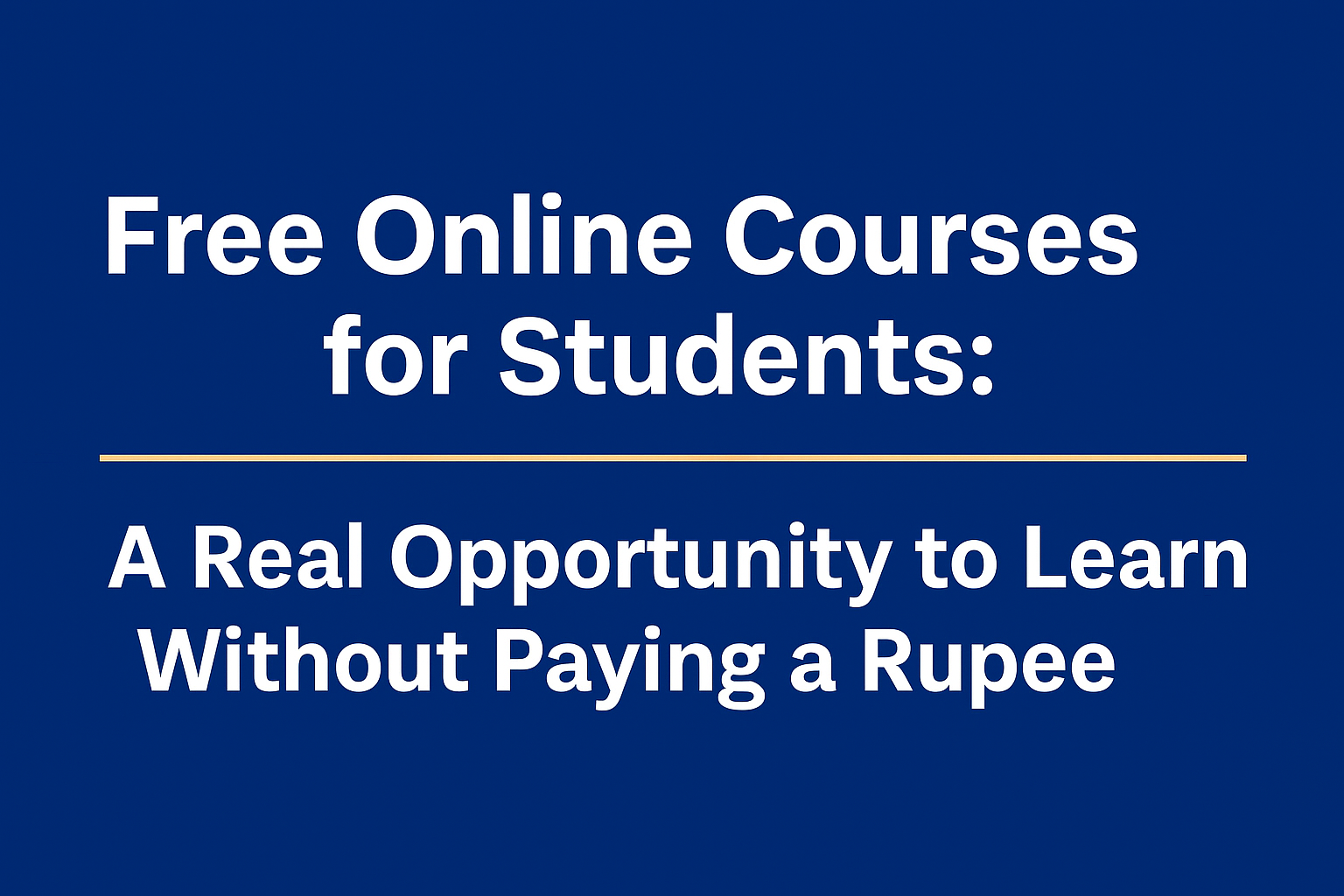

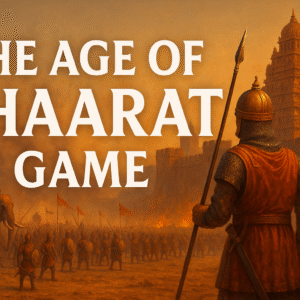
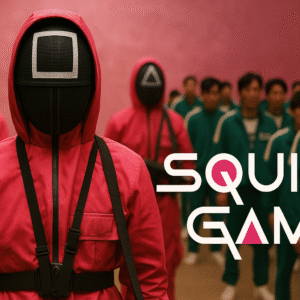
Leave a Reply